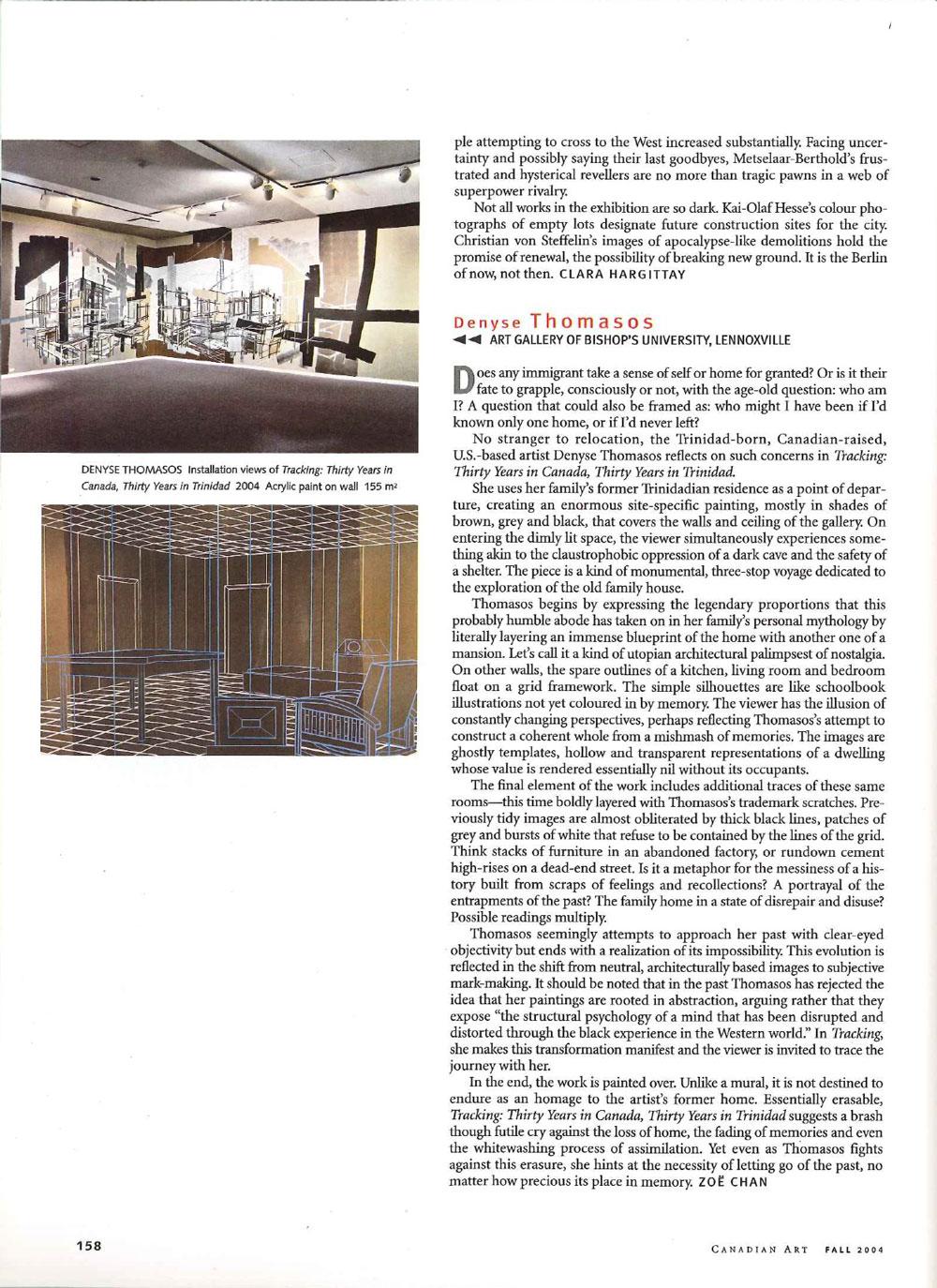Art Gallery of Bishop’s University, Lennoxville
Does any immigrant take a sense of self or home for granted? Or is it their fate to grapple, consciously or not, with the age-old question: who am I? A question that could also be framed as: who might I have been if I’d known only one home, or if I’d never left?
No stranger to relocation, the Trinidad-born, Canadian-raised, U.S.-based artist Denyse Thomasos reflects on such concerns in Tracking: Thirty Years in Canada, Thirty Years in Trinidad.
She uses her family’s former Trinidadian residence as a point of departure, creating an enormous site-specific painting, mostly in shades of brown, grey and black, that covers the walls and ceiling of the gallery. On entering the dimly lit space, the viewer simultaneously experiences something akin to the claustrophobic oppression of a dark cave and the safety of a shelter. The piece is a kind of monumental, three-stop voyage dedicated to the exploration of the old family house.
Thomasos begins by expressing the legendary proportions that this probably humble abode has taken on in her family’s personal mythology by literally layering an immense blueprint of the home with another one of a mansion. Let’s call it a kind of utopian architectural palimpsest of nostalgia. On other walls, the spare outlines of a kitchen, living room and bedroom float on a grid framework. The simple silhouettes are like schoolbook illustrations not yet coloured in by memory. The viewer has the illusion of constantly changing perspectives, perhaps reflecting Thomasos’s attempt to construct a coherent whole from a mishmash of memories. The images are ghostly templates, hollow and transparent representations of a dwelling whose value is rendered essentially nil without its occupants.
The final element of the work includes additional traces of these same rooms—this time boldly layered with Thomasos’s trademark scratches. Previously tidy images are almost obliterated by thick black lines, patches of grey and bursts of white that refuse to be contained by the lines of the grid. Think stacks of furniture in an abandoned factory, or rundown cement high-rises on a dead-end street. Is it a metaphor for the messiness of a history built from scraps of feelings and recollections? A portrayal of the entrapments of the past? The family home in a state of disrepair and disuse? Possible readings multiply.
Thomasos seemingly attempts to approach her past with clear-eyed objectivity but ends with a realization of its impossibility. This evolution is reflected in the shift from neutral, architecturally based images to subjective mark-making. It should be noted that in the past Thomasos has rejected the idea that her paintings are rooted in abstraction, arguing rather that they expose “the structural psychology of a mind that has been disrupted and distorted through the black experience in the Western world.” In Tracking, she makes this transformation manifest and the viewer is invited to trace the journey with her.
In the end, the work is painted over. Unlike a mural, it is not destined to endure as an homage to the artist’s former home. Essentially erasable, Tracking: Thirty Years in Canada, Thirty Years in Trinidad suggests a brash though futile cry against the loss of home, the fading of memories and even the whitewashing process of assimilation. Yet even as Thomasos fights against this erasure, she hints at the necessity of letting go of the past, no matter how precious its place in memory.
From the Fall 2004 issue of Canadian Art









